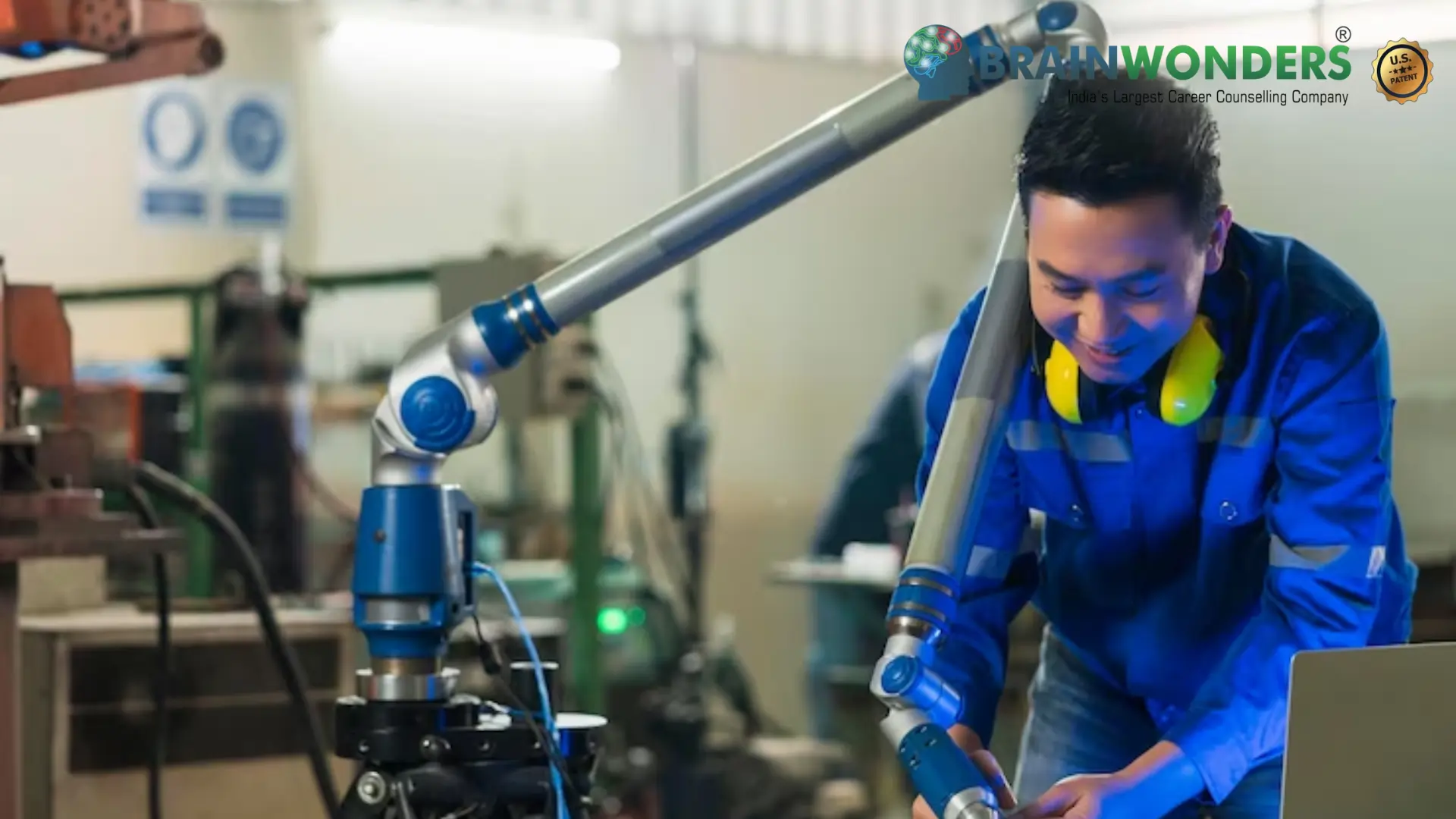How to become a Human Factor Engineer and Ergonomist
Overview, Courses, Exam, Colleges, Pathways, Salary

Overview
Who is Human Factor Engineer and Ergonomist ?
Human Factors Engineers and Ergonomists specialize in studying human capabilities, limitations, and interactions with various systems and environments. They apply scientific principles to design products, techniques, and workspaces that optimize human performance, safety, and well-being.
Human Factors Engineers focus on designing and evaluating user interfaces, equipment, and technology to enhance usability and user experience. They analyze human behaviour, cognitive processes, and physical interactions to ensure that systems are intuitive, efficient, and error-resistant.
Ergonomists, on the other hand, concentrate on optimizing the fit between individuals and their work environments. They assess physical, cognitive, and organizational factors to design workspaces, tools, and tasks that reduce the risk of injury, fatigue, and stress while improving productivity and comfort.
Both professionals collaborate with interdisciplinary teams, research, apply ergonomic principles, and integrate user feedback to create systems and environments that align with human capabilities, promoting safety, efficiency, and user satisfaction.
Typical day at work
What does Human Factor Engineer and Ergonomist do?
Human Factors Engineer:
- Conduct user research and usability testing to evaluate the effectiveness and efficiency of product designs.
- Design and improve user interfaces, including graphical displays, controls, and interaction methods, to enhance user experience and reduce errors.
- Analyze human behaviour and cognitive processes to ensure systems are intuitive and user-friendly.
- Collaborate with design and engineering teams to incorporate user-centred design principles and best practices.
- Identify potential hazards and risks in systems, and recommend design modifications to enhance safety and reduce user errors.
- Contribute to developing guidelines, standards, and regulations related to human factors in various industries.
- Conduct training and provide user training and documentation recommendations to support safe and efficient system use.
Ergonomist:
- Assess and design workspaces, equipment, and tools to optimize the fit between individuals and their tasks.
- Analyze physical, cognitive, and organizational factors to reduce the risk of musculoskeletal disorders, fatigue, and stress.
- Conduct ergonomic evaluations and recommend interventions to improve safety, comfort, and productivity.
- Provide ergonomic solutions for office environments, manufacturing facilities, healthcare settings, and other work environments.
- Collaborate with architects and designers to incorporate ergonomic principles into the design of new workspaces and facilities.
- Conduct ergonomic training and education to promote awareness and proper ergonomic practices among workers.
- Research to advance the understanding of human capabilities, limitations, and the impact of ergonomic interventions.
Abilities and Aptitude needed
What are the skills, abilities & aptitude needed to become Human Factor Engineer and Ergonomist?
- Knowledge of Human Factors and Ergonomics: A strong understanding of human factors and ergonomics principles, theories, and concepts is necessary. This includes knowledge of human cognition, perception, anthropometry, biomechanics, and work system design.
- Analytical and Critical Thinking: Human Factors Engineers and Ergonomists should possess strong analytical and critical thinking skills to identify problems, analyze data, and develop practical solutions. They should be able to apply scientific methods and research techniques to evaluate and improve systems and environments.
- Research and Data Analysis: Proficiency in conducting research, collecting and analyzing data, and interpreting findings is essential. This includes skills in qualitative and quantitative research methods, statistical analysis, and data visualization.
- User-Centred Design: Human Factors Engineers should have expertise in user-centred design principles. They need to understand user requirements, conduct user research, and translate insights into design recommendations that enhance usability and user experience.
- Technical Knowledge: Familiarity with various tools and software used in human factors and ergonomics research and design, such as data collection instruments, statistical analysis software, and human modelling software, is beneficial.
- Communication and Collaboration: Excellent communication skills are crucial for effectively communicating research findings, design recommendations, and collaborating with interdisciplinary teams. Human Factors Engineers and Ergonomists should be able to present complex information clearly and concisely to both technical and non-technical audiences.
- Problem Solving and Creativity: Strong problem-solving skills are necessary to identify and address human factors and ergonomic issues. The ability to think creatively and generate innovative solutions is valuable in designing systems and environments that meet user needs.
- Attention to Detail: Human Factors Engineers and Ergonomists should have a keen eye for detail to identify subtle nuances impacting user performance and well-being. Attention to detail is crucial in conducting precise measurements, analyzing data, and developing accurate recommendations.
- Adaptability and Flexibility: Human Factors Engineers and Ergonomists often work on projects in various industries and domains. The ability to adapt to different contexts, learn new technologies or tools, and work on multiple projects simultaneously is essential.
- Ethical Considerations: Having a strong sense of professional ethics is crucial. Human Factors Engineers and Ergonomists must prioritize user safety, privacy, and well-being while respecting confidentiality and ethically conducting research and design activities.
Ready to become a Human Factor Engineer and Ergonomist ?
Take the world’s best assessment test !
Take a TestPathways
How to become an Human Factor Engineer and Ergonomist?
Entrance Exam
Entrance Exam for Human Factor Engineer and Ergonomist ?
Courses
Which course I can pursue?
Best Colleges
Which are the best colleges to attend to become an Human Factor Engineer and Ergonomist?
Industries
Which Industries are open for Human Factor Engineer and Ergonomist?
- Technological Advancements: As technology evolves, Human Factors Engineers and Ergonomists will play a vital role in designing interfaces and interactions that optimize usability, safety, and user experience. They will address the challenges and opportunities of emerging technologies such as virtual, augmented, and artificial intelligence.
- Digital Transformation: With the increasing digitalization of work environments and processes, Human Factors Engineers and Ergonomists will focus on improving the ergonomics of digital interfaces, reducing musculoskeletal issues associated with prolonged device use, and optimizing workflow efficiency in digital workspaces.
- User-Centred Design: The future will see a greater emphasis on user-centred design approaches. Human Factors Engineers and Ergonomists will continue to advocate for the needs and preferences of end-users, ensuring that products, systems, and environments are tailored to their requirements, leading to improved user satisfaction and performance.
- Aging Workforce: Human Factors Engineers and Ergonomists will play a critical role in designing age-friendly work environments as the workforce ages. They will focus on accommodating the changing needs and abilities of older workers, addressing ergonomic challenges, and promoting healthy and productive ageing in the workplace.
- Sustainability and Well-being: Human Factors Engineers and Ergonomists will contribute to creating sustainable and environmentally friendly designs. They will integrate principles of sustainability and well-being into the design process, considering factors such as energy efficiency, carbon footprint, and the impact on user health and comfort.
- Occupational Health and Safety: Ergonomists will continue to play a vital role in ensuring occupational health and safety. They will design workspaces and processes that minimize the risk of injuries, reduce physical and mental fatigue, and enhance overall worker well-being.
- Collaboration and Interdisciplinary Integration: Human Factors Engineers and Ergonomists will collaborate closely with professionals from diverse disciplines such as design, engineering, psychology, and data science. This interdisciplinary integration will lead to more holistic and practical solutions considering both human and technical aspects.
- Professional Development and Research: Continuous professional development and research will be essential for Human Factors Engineers and Ergonomists to stay at the forefront of the field. They will engage in ongoing learning, participate in conferences, and contribute to research efforts to advance the understanding and application of human factors and ergonomics.
internship
Are there internships available for Human Factor Engineer and Ergonomist?
Internships are available for Human Factors Engineers and Ergonomists, providing valuable opportunities for aspiring professionals to gain practical experience in the field. Internships allow individuals to apply their theoretical knowledge in real-world settings and develop skills under the guidance of experienced practitioners.
Internships in Human Factors Engineering and Ergonomics can be found in various industries, including manufacturing, healthcare, technology, automotive, and consumer product companies.
Some research institutions, consulting firms, and government agencies also offer internships in these fields.
To find internships, individuals can explore job boards, company websites, and professional organisations specialising in Human Factors Engineering and Ergonomics. Networking with professionals in the field, attending industry conferences, and reaching out to academic institutions that offer related programs can also provide leads to internship opportunities.
Internships may be full-time or part-time, paid or unpaid, and vary in duration. They offer hands-on experience in conducting research, analysing data, designing user interfaces, evaluating products or workspaces, and collaborating with multidisciplinary teams. Internships provide valuable industry exposure and help build a professional network, which can be beneficial for future career opportunities in Human Factors Engineering and Ergonomics. The future for Human Factors Engineers and Ergonomists is promising, with increasing recognition of the importance of human-centred design and optimising work environments. The growing integration of advanced technologies, such as virtual reality and artificial intelligence, will provide new opportunities for these professionals to enhance user experiences and address ergonomic challenges. With an ageing population, there will be a greater focus on designing age-friendly environments and healthcare systems. The emphasis on sustainable design and worker well-being will also create new avenues for Human Factors Engineers and Ergonomists. Collaboration with multidisciplinary teams will be essential, and continuous professional development will ensure they stay at the forefront of research and innovation. Overall, the future holds exciting prospects for these professionals to shape the design of systems, products, and workspaces to optimise human performance and well-being.
Career outlook
What does the future look like for Human Factor Engineer and Ergonomist?
The future for Human Factors Engineers and Ergonomists is promising, with increasing recognition of the importance of human-centred design and optimising work environments. The growing integration of advanced technologies, such as virtual reality and artificial intelligence, will provide new opportunities for these professionals to enhance user experiences and address ergonomic challenges. With an ageing population, there will be a greater focus on designing age-friendly environments and healthcare systems. The emphasis on sustainable design and worker well-being will also create new avenues for Human Factors Engineers and Ergonomists. Collaboration with multidisciplinary teams will be essential, and continuous professional development will ensure they stay at the forefront of research and innovation. Overall, the future holds exciting prospects for these professionals to shape the design of systems, products, and workspaces to optimise human performance and well-being.





